Abstract
In British Guiana, the successful eradication of Anopheles darlingi and malaria from the coastal areas has caused a very rapid increase in the population and has favoured a considerable social and economic improvement and expansion of both agriculture and industry. Housing and industrial developments and the constantly expanding rice cultivation have taken over most of the accessible pasture-lands, displacing the livestock which previously abounded around villages and settlements. Mechanization on the roads and in the fields increases daily, and the horse, the mule, the donkey and the ploughing oxen are gradually becoming obsolete.
In some areas these changes have already caused such an upset in the balance between the human and the livestock population that A. aquasalis, a very abundant species all along the coast, but until recently entirely “fixed” by the livestock population, is now shifting its attention from livestock to man. On the Demerara river estuary, an area where malaria transmission was interrupted sixteen years ago and where eradication has been continually maintained, this mosquito has been responsible for a sharp, but localized, outbreak of P. vivax malaria. An entirely new epidemiological problem thus presents itself.
Environmental changes, introduced and fostered by successful malaria eradication, may thus cause an anopheline species, potentially capable of malaria transmission, but originally inactive and harmless as a vector, to alter its feeding habits and thereby renew transmission. The immediate and long-term significance of some secondary and potential vectors may therefore require renewed evaluation in the planning of malaria eradication campaigns.
Full text
PDF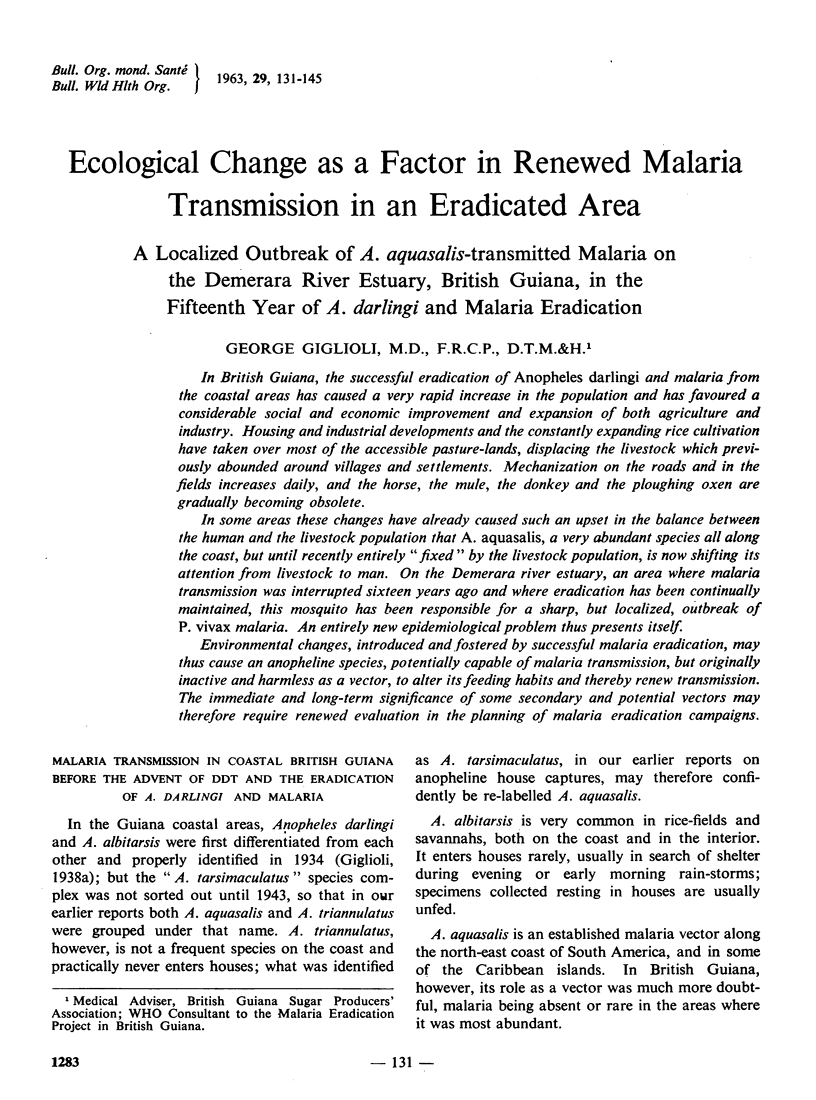
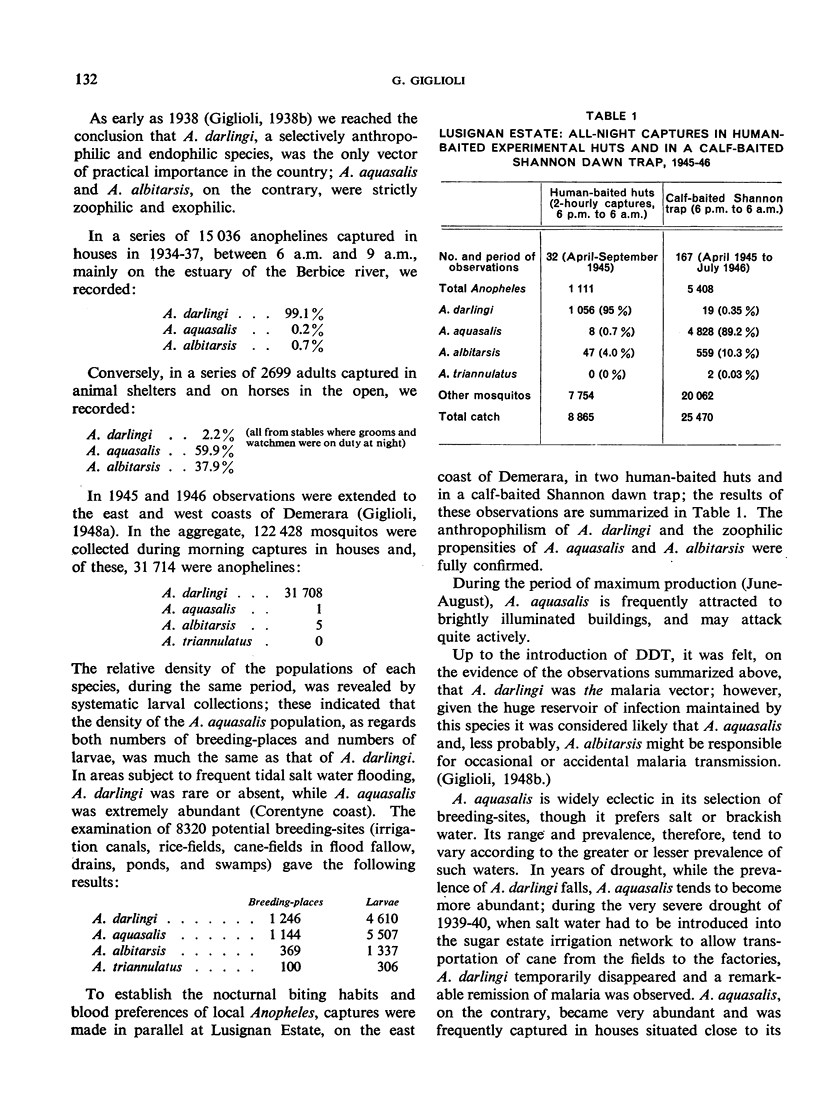
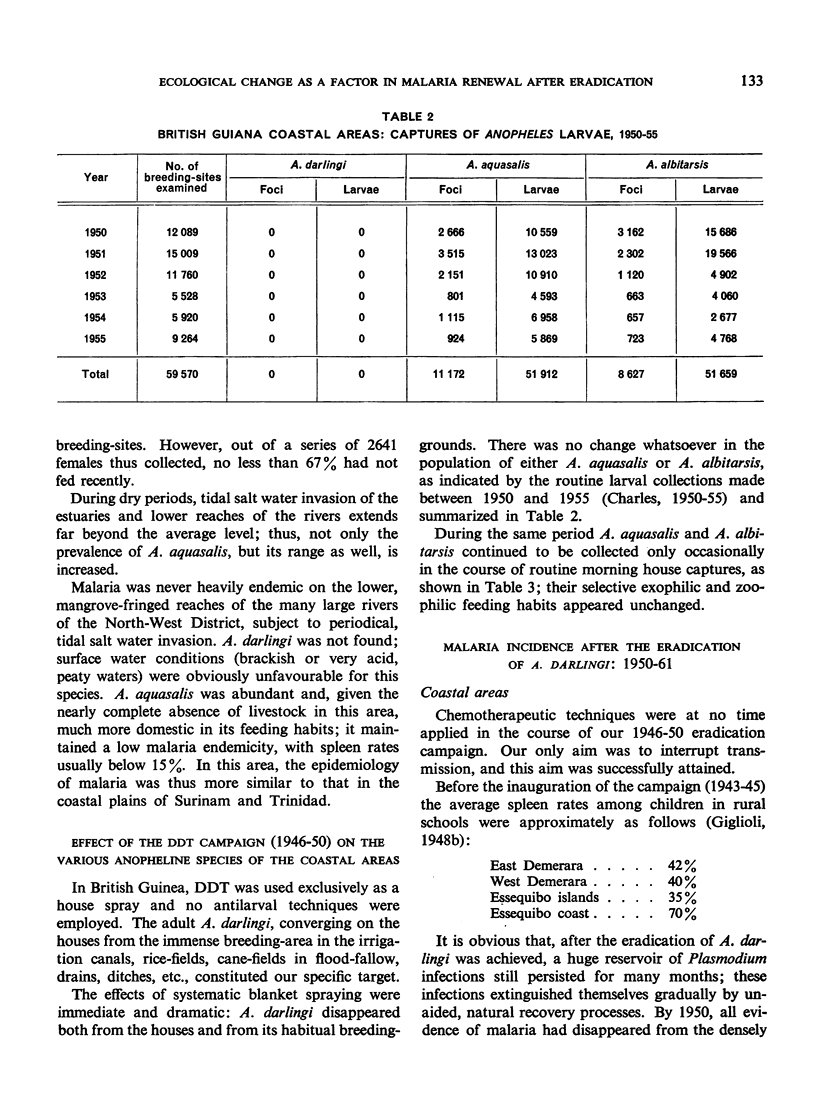
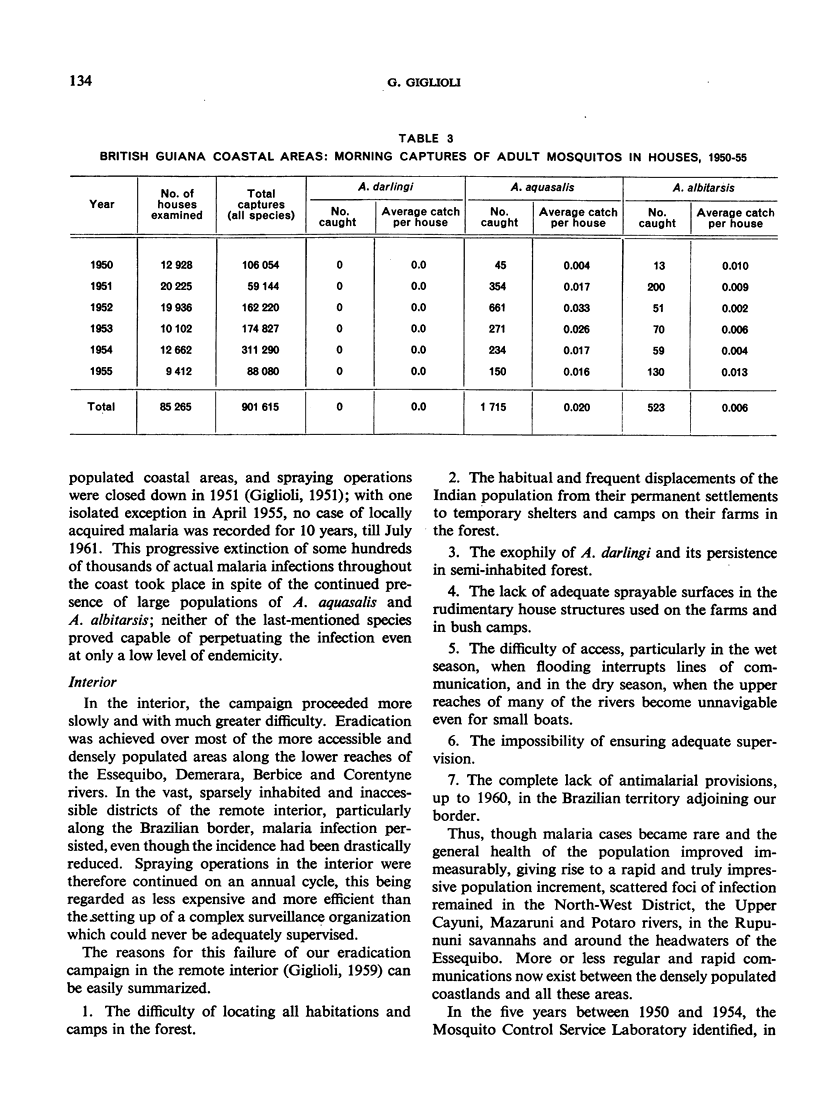
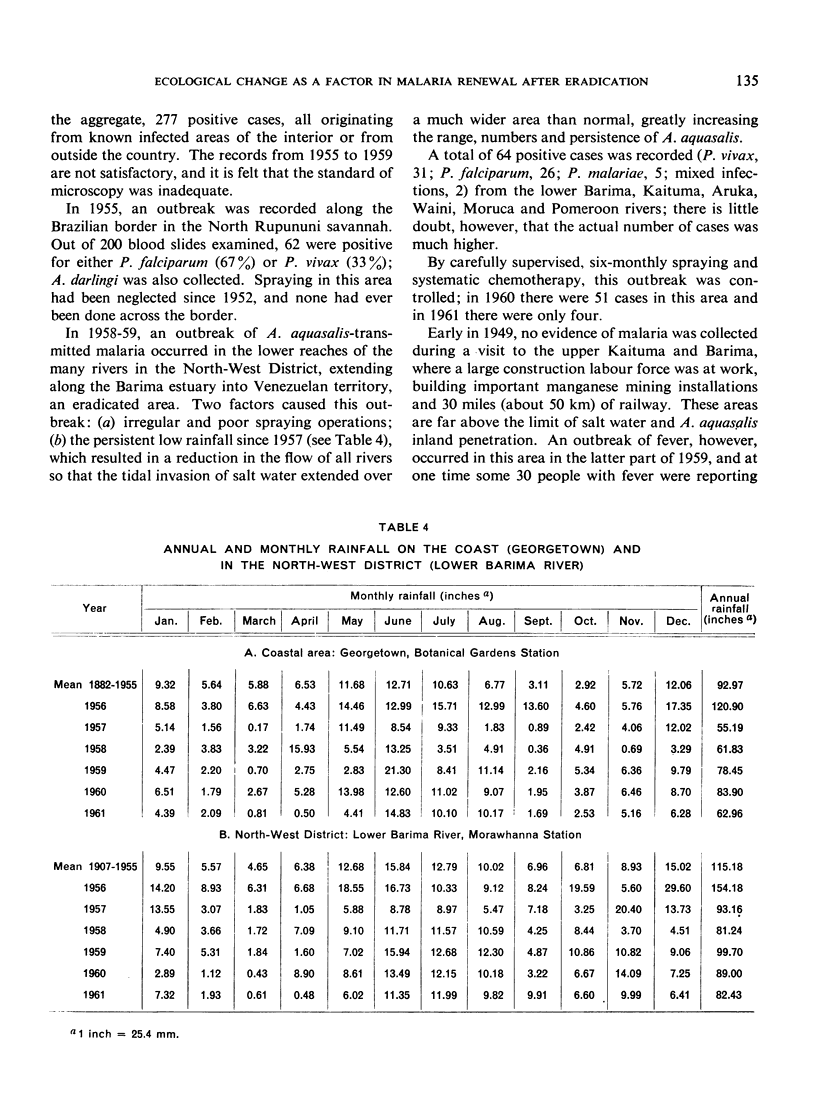
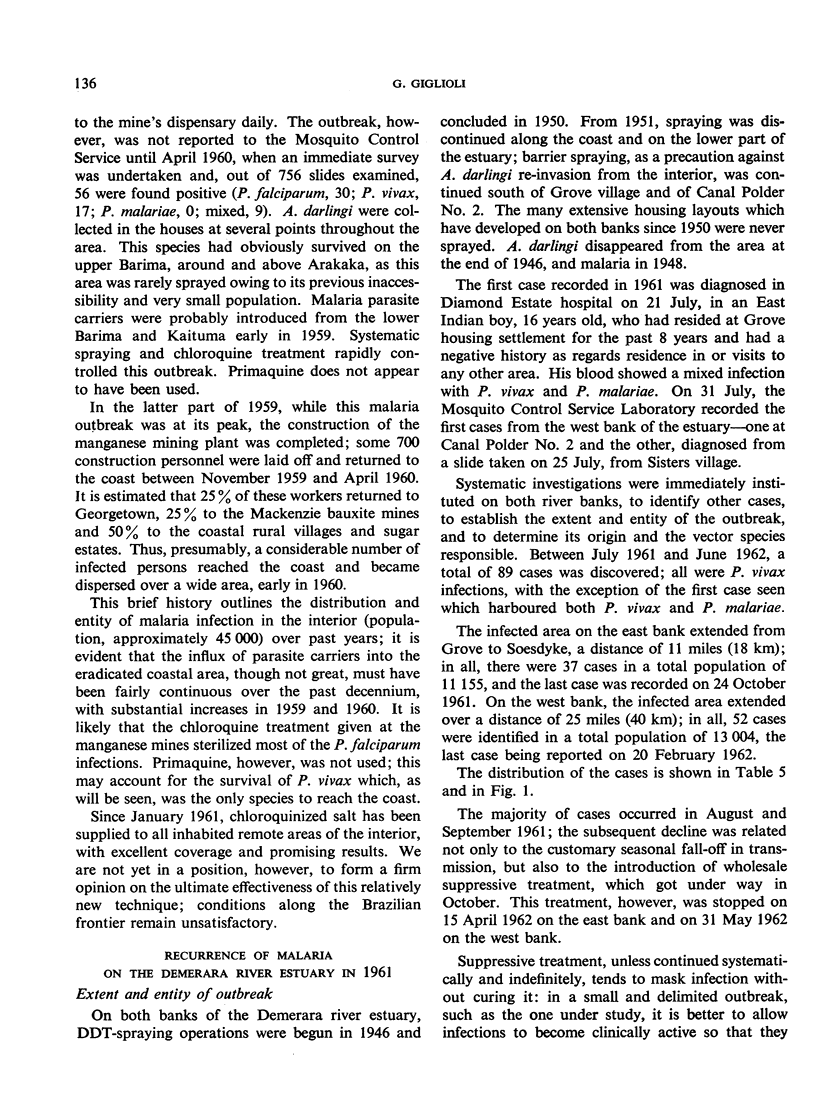
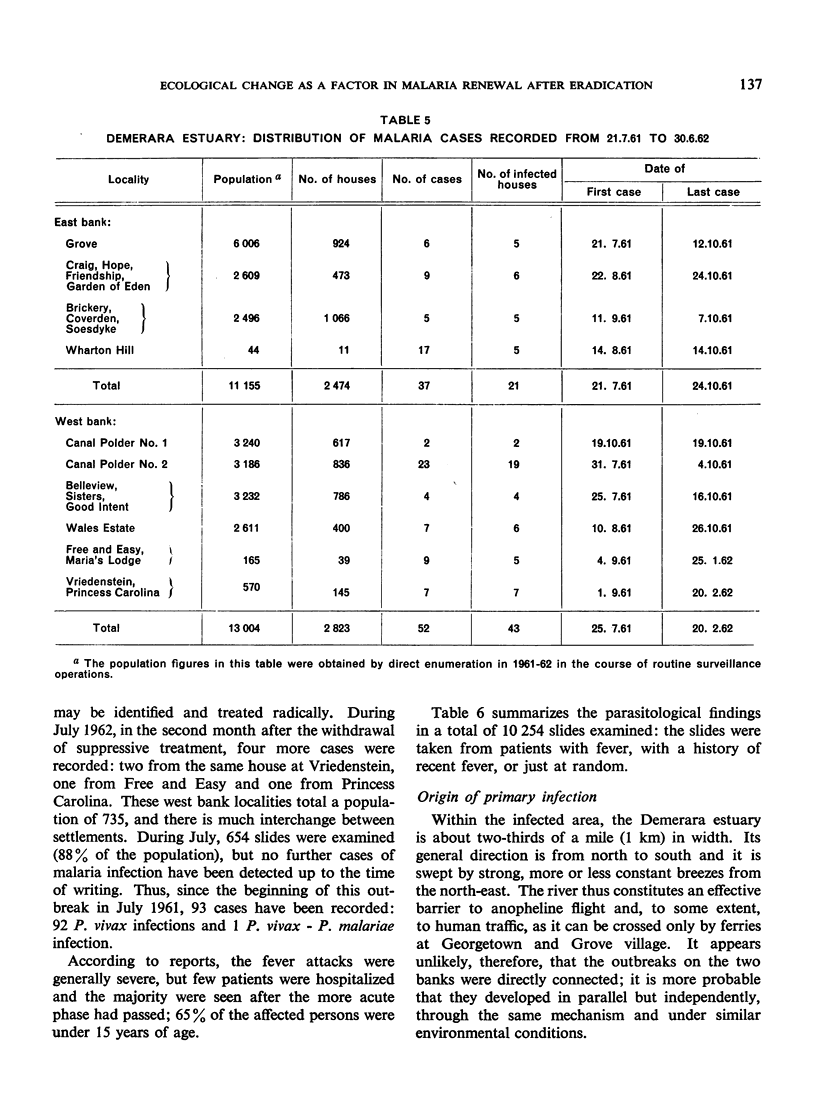
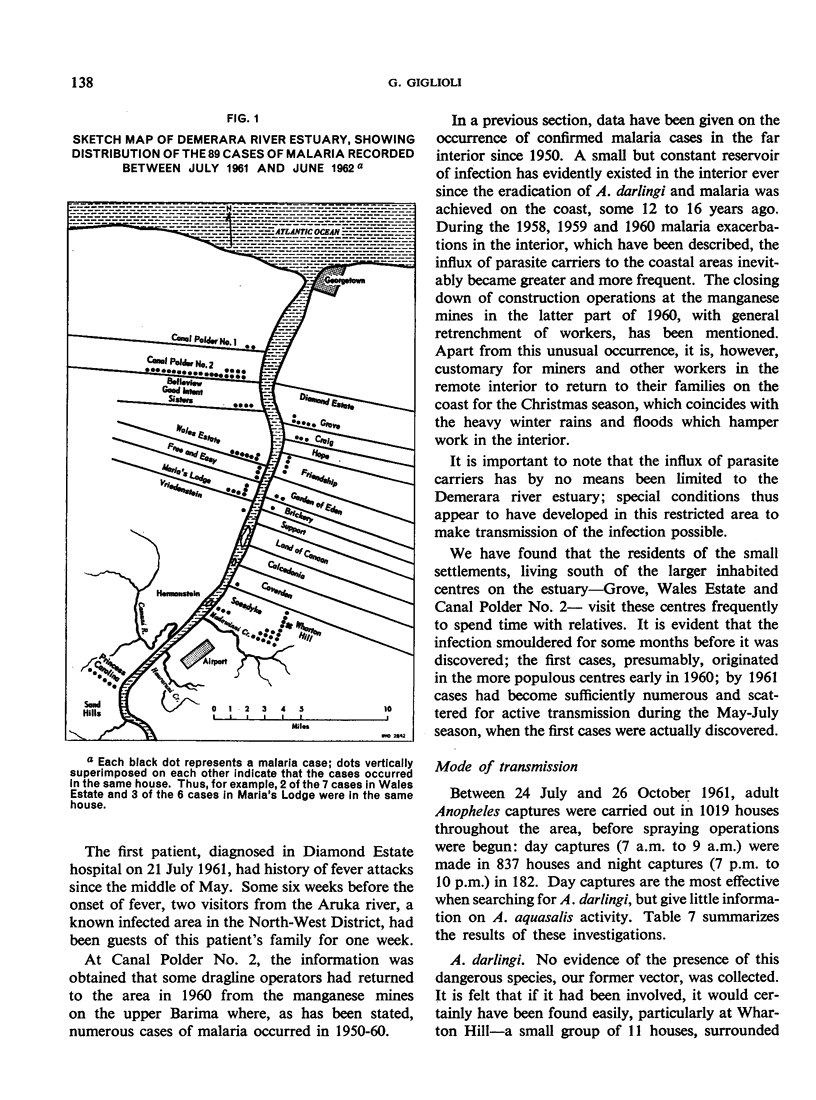
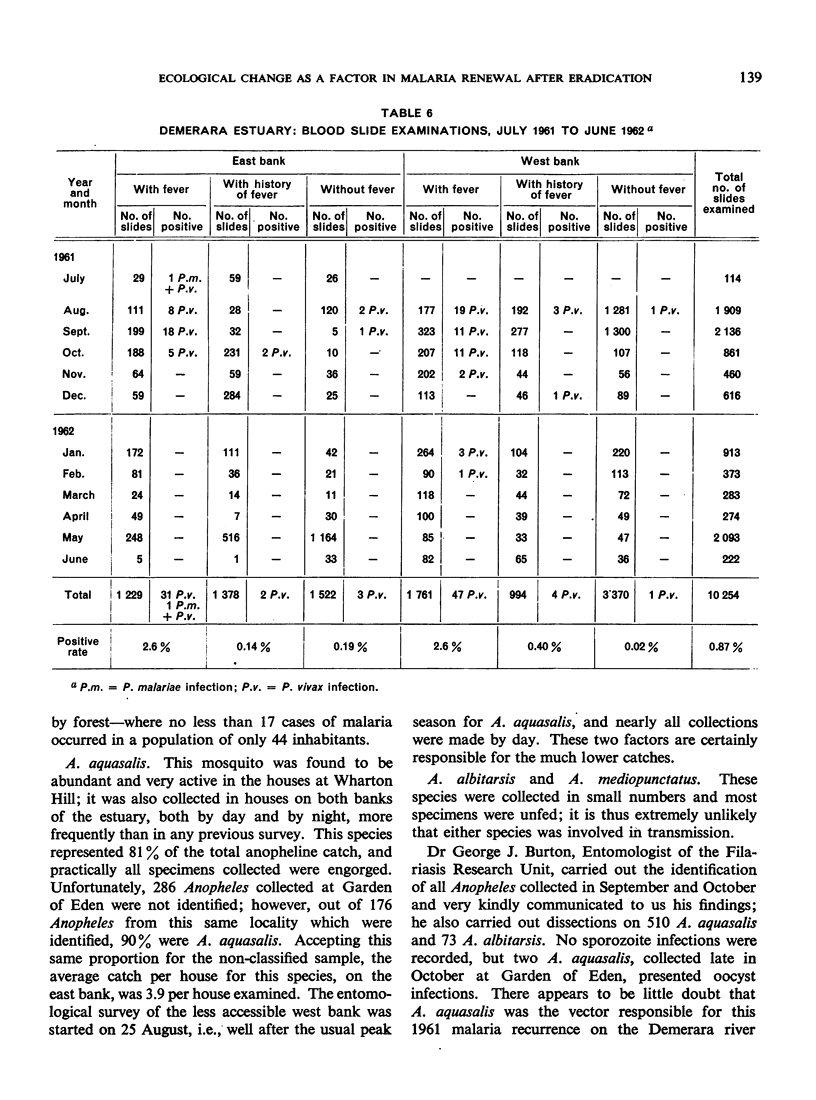
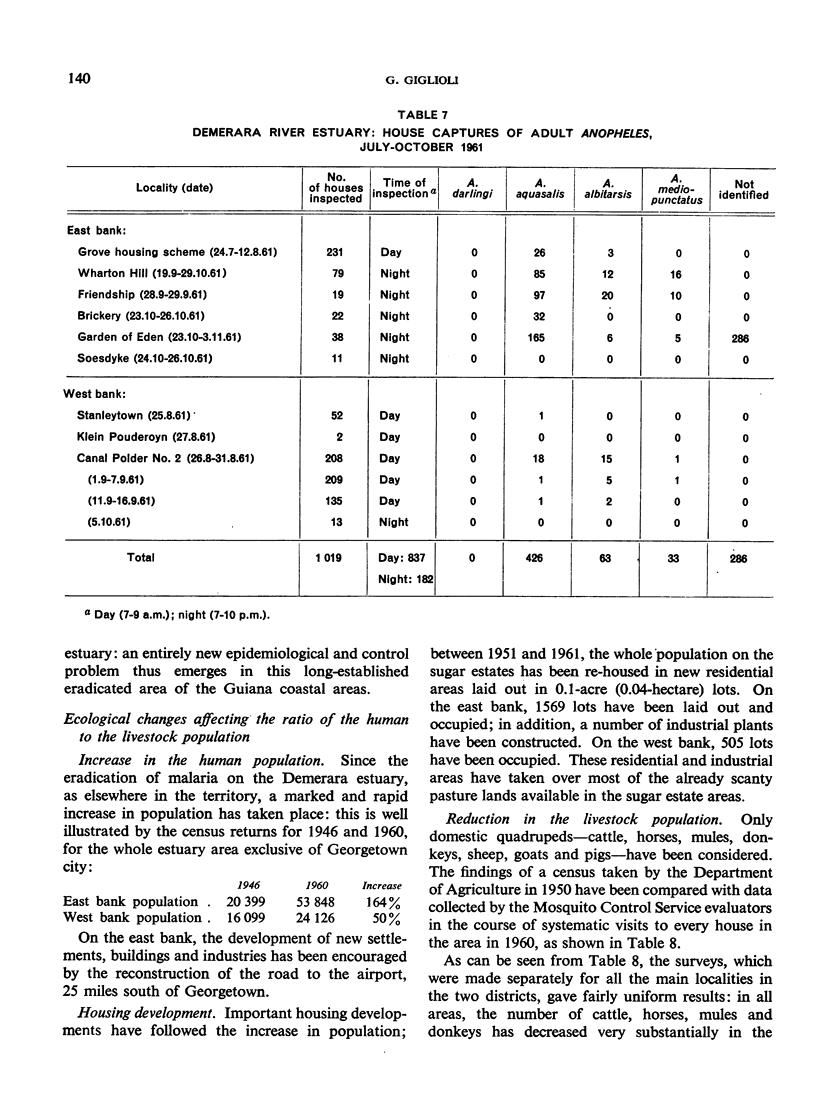
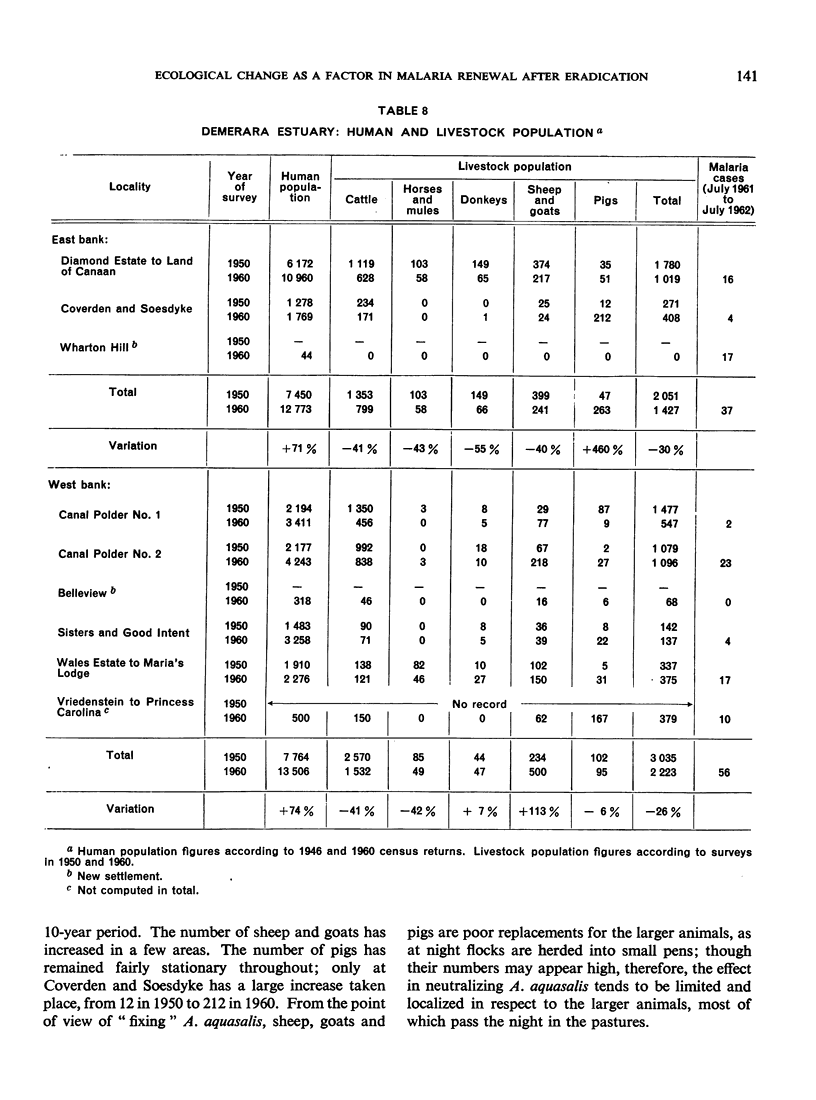
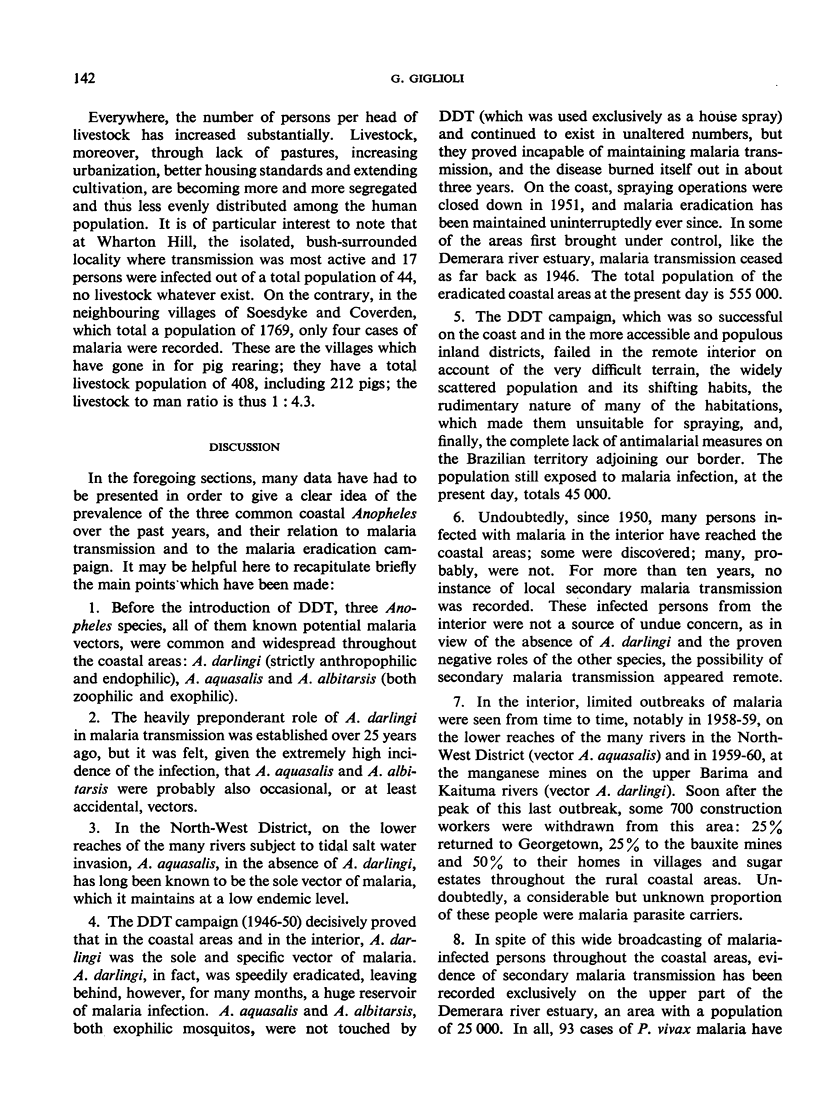
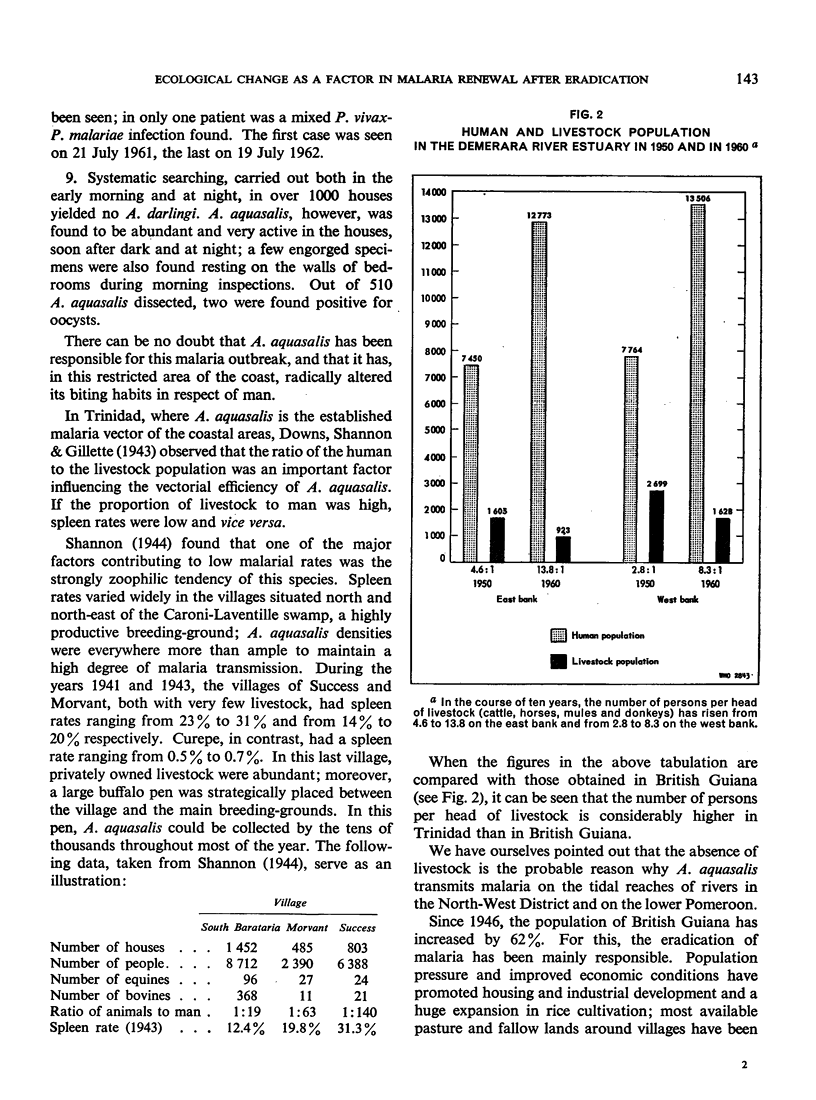
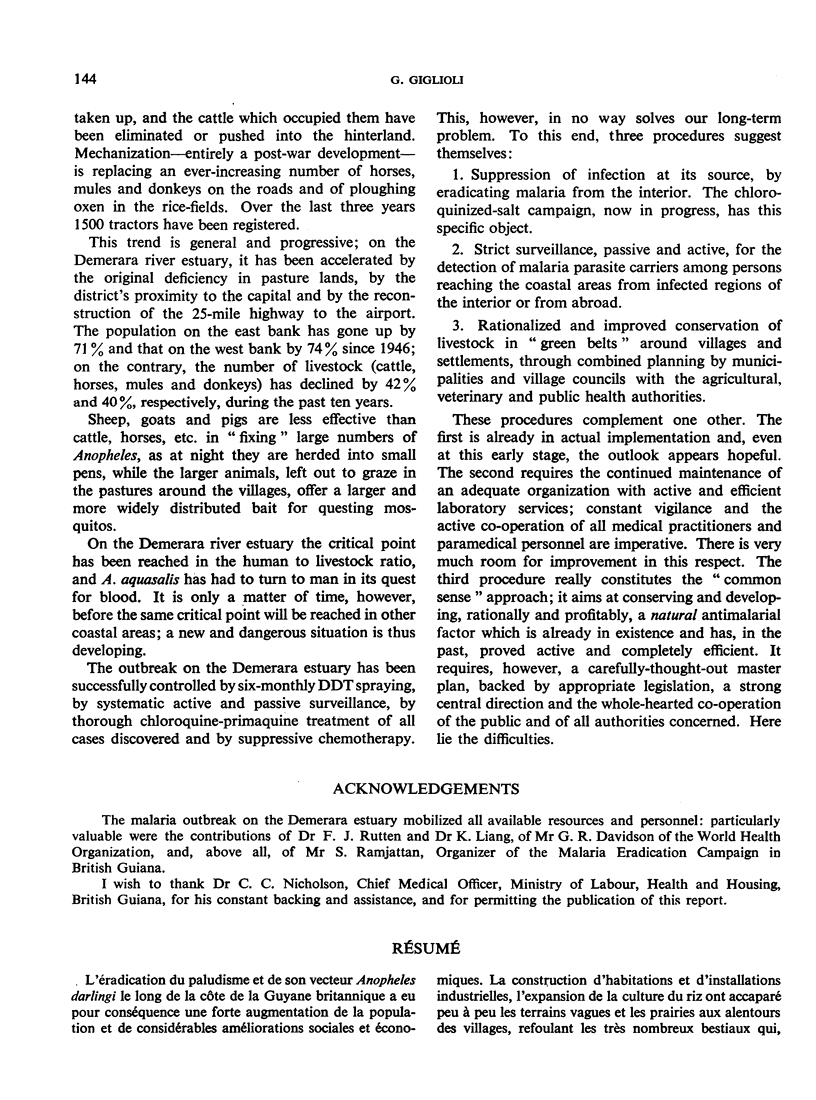
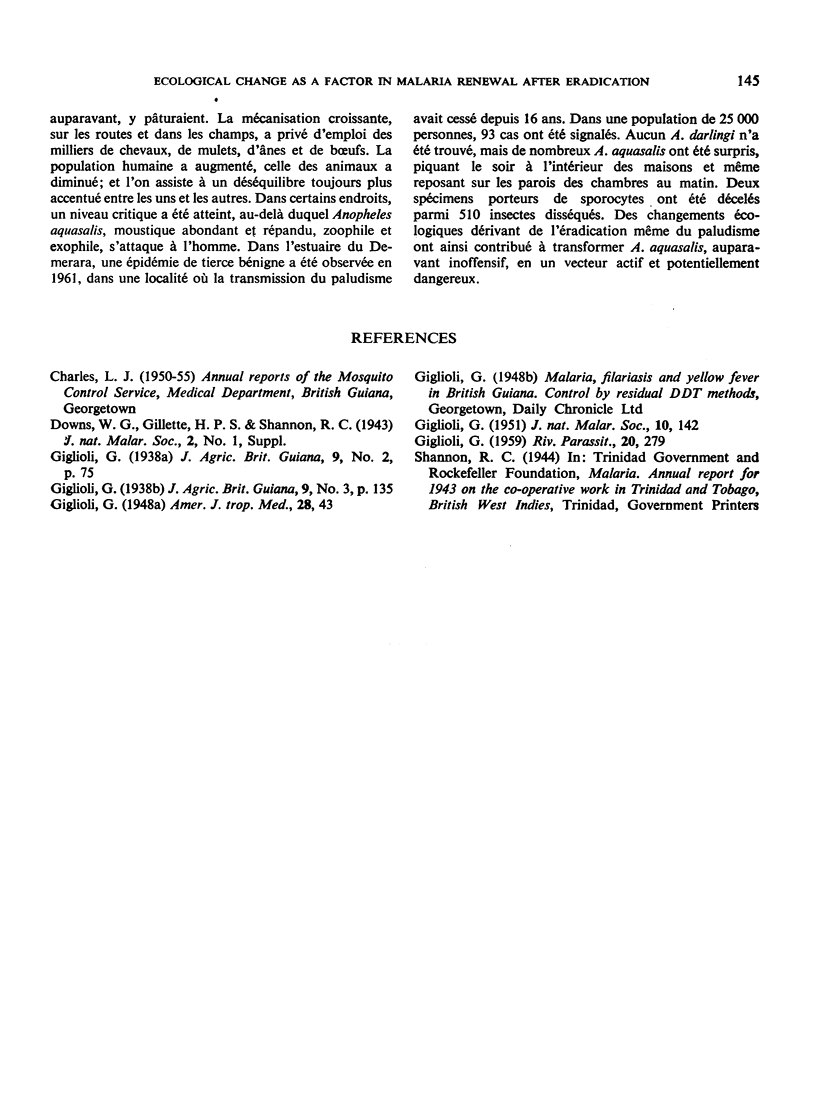
Selected References
These references are in PubMed. This may not be the complete list of references from this article.
- GIGLIOLI G. Nation-wide malaria eradication projects in the Americas. III. Eradication of Anopheles darlingi from the inhabited areas of British Guiana by DDT residual spraying. J Natl Malar Soc. 1951 Jun;10(2):142–161. [PubMed] [Google Scholar]


